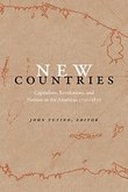Explore

Between 1750 and 1870 the world faced transformations marked by the rise of industrial capitalism, the fall of European empires in the Americas, and the rise of nations there. 'New Countries' explores how these events transformed the Americas in diverging ways. Up to 1790, Saint Domingue’s sugar and slave economy drove Atlantic trades; then revolutionary slaves made Haiti, freeing themselves and ending export production. New Spain’s silver fueled global trades until Bajío insurgents collapsed silver capitalism and undermined Spanish rule after 1810. The fall of silver left regions from Mexico through Guatemala and the Andes in search of new polities and economies. After 1870 the United States became an agro-industrial hegemon, most American nations turned to commodity exports, and Haitians and diverse indigenous peoples struggled to keep independent lives beyond the reach of industrial powers seeking supplies and markets.
This book is included in DOAB.
Why read this book? Have your say.
You must be logged in to comment.
Rights Information
Are you the author or publisher of this work? If so, you can claim it as yours by registering as an Unglue.it rights holder.Downloads
This work has been downloaded 477 times via unglue.it ebook links.
- 57 - pdf (CC BY-NC-ND) at OAPEN Library.
- 162 - pdf (CC BY-NC-ND) at Unglue.it.
Keywords
- Brazil
- History
- History / Latin America
- History of the Americas
- Humanities
- KUnlatched
- Mexico
- Regional & national history
- Slavery
- Spain
- thema EDItEUR::N History and Archaeology::NH History::NHK History of the Americas
- United States
Links
DOI: 10.26530/OAPEN_625281Editions

